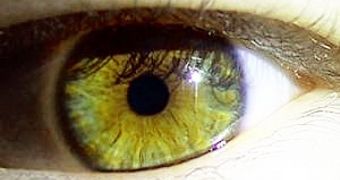The human brain is responsible for analyzing, or integrating, all of the five established senses that each of us has. When each of these senses is activated, changes were previously proven to occur in the cortex, which modifies itself so as to ensure that we perceive events on the outside as accurately as possible. Recently, scientists at the Technical University Munich Center for Integrated Protein Science, and the Institute of Neuroscience, have published a new study, which concentrates on the functional changes in the visual cortex after the eyes are opened.
“Eye-opening represents a turning point in the function of the visual cortex. Before eye-opening, the visual cortex is largely devoid of sensory inputs and neuronal activities are generated intrinsically. After eye-opening, the cortex starts to integrate visual information,” the authors write in a new paper accompanying the investigation, published in the August 14th online issue of the respected journal Proceedings of the National Academy of Sciences (PNAS).
By using a viewing technique known as two-photon calcium imaging on live mice, the researchers got a thorough insight into how developmental changes in the rodents' cortices appeared, by analyzing the spontaneous activity that appeared as soon as the animals opened their eyes. The reason why the study was conducted on mice is because they only open their eyes a few weeks after birth. In the experiments, one group of rodents was reared normally, while another was reared in the dark. The German team says that this helped them understand whether intrinsic or external factors were influencing the activity in the animals' neural cortices.
Emphasis was placed on layer 2/3 neurons, which had their traits analyzed since the first week of birth until several weeks after the mice opened their eyes. The researchers learned that more than 75 percent of nerve cells in this brain layer were active immediately before eye-opening, but that their proportion decreased considerably one day afterwards, to about 36 percent. Additionally, over the following days, the amount of active nerve cells decreased further, until it reached a steady 12 percent.
“These results reveal a modulatory contribution of visual experience during the first days after eye-opening, but an overall dominating role of intrinsic factors. We propose that the transformation in network activity from dense to sparse is a prerequisite for the changed cortical function at eye-opening,” the researchers conclude. The team now plans to conduct similar investigations on humans, to determine whether the same patterns of visual processing area activity are maintained in us as well.

 14 DAY TRIAL //
14 DAY TRIAL //